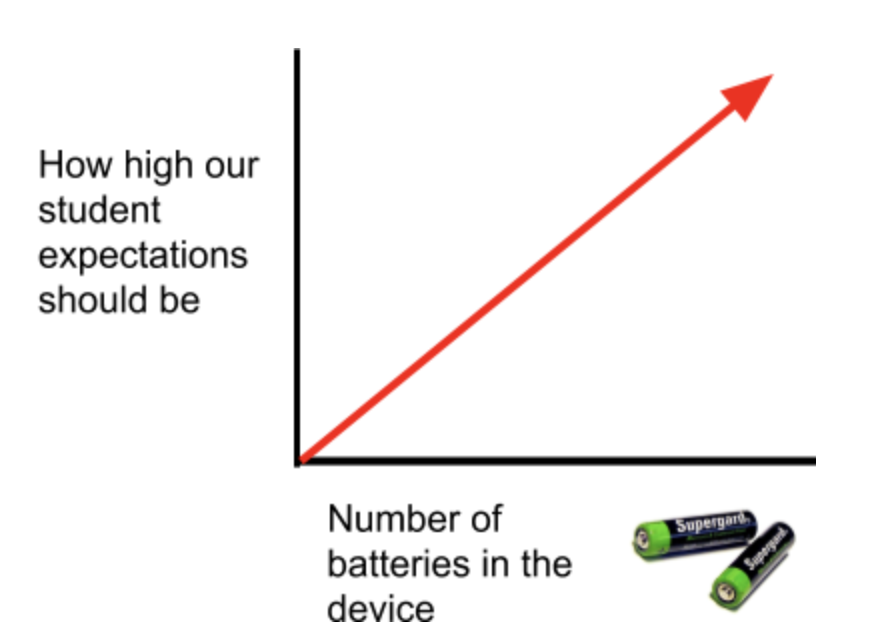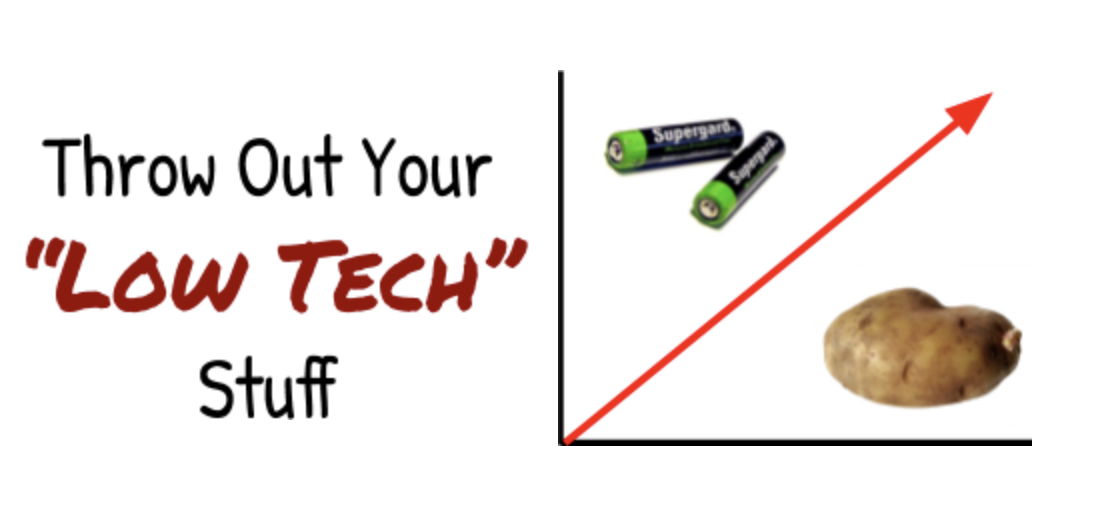- Home
- News & Networking
- Blog
- Jessica Conrad
- Throw Out Your "Low Tech" Stuff
Throw Out Your "Low Tech" Stuff
My husband and I have an inside joke for measuring things that can’t quite be measured: the potato.
How much do I love you? 12 potato.
How cute is our dog? 9.5 potato.
How much do we hate fireworks after midnight? 14,000 potato.
It’s silly nonsense but easy to use.
A couple of years ago I was talking to a team about a young student who had complex communication needs. They had tried the Picture Exchange Communication System (PECS) but the student wasn’t making much progress. I asked why they had started with PECS.
“We use best practice. First, we start with low tech.”
Exactly zero potato of that is best practice.
How does one progress on this imaginary spectrum of technology? Is it when you perform really well or really badly? Did the number of batteries used in the tool correlate with her skills or her needs?
No one could say, but there was an unwritten rule: something had to be proven before you got something “fancy.”
It’s a hard paradigm to change for all us folks born in the late 1900s (ouch): it’s 2020, there is no such thing as a low-high assistive technology spectrum.
Consider this model I adapted from my old notes on aided AAC and other AT:
Low tech:
Cheap, easy to learn, no batteries, minimal vocabulary
Mid tech:
Moderately expensive, needs some training, more vocabulary
High tech:
Expensive, extensive training needed, relies on touch screens technology or other newer technology, lots of vocabulary
The more you learn, the more the above is proven wrong. A PODD book comes in paper with tons of vocabulary and in my experience requires lots of training, a minimum investment of several hundred dollars. We have a library of very limited and inexpensive communication apps we could teach you to use in 10 minutes or less.
We have apps and extensions that are free or built into any cheap smartphone that can read text aloud, is this “high tech” AT better or worse than the "mid-tech" text scanning pen or the "low tech" sheet overlay? The number of batteries it has will inform you about as well as my potatoes.
What do we do instead of relying on the imaginary technology spectrum?
PATINS Specialists can help you discover several frameworks and assessment tools that help teams keep the focus on what is important: your student receiving an equitable and accessible education. Our no-cost consultation services are always available for our Indiana public PreK-12 schools with a focus on best practice, sound evidence base, and effective ideas. We'll even loan you tools to try from our no-cost Lending Library and be available every step of your student's trial.
When we focus on our student’s needs and the features of the tools, our IEPs and supports become better. We are able to figure out which things our students have outgrown, we are quicker to identify what isn’t working and why. When we use a common language of tool features, our students learn to advocate for themselves more effectively and our conversations with other team members become more productive.
Do not throw out your "low tech" stuff. Throw out the low/high technology spectrum labels and embrace tool features so your students can address the barriers in their world. You’ll be a better professional for it.
I’m 400 potato certain.



Comments